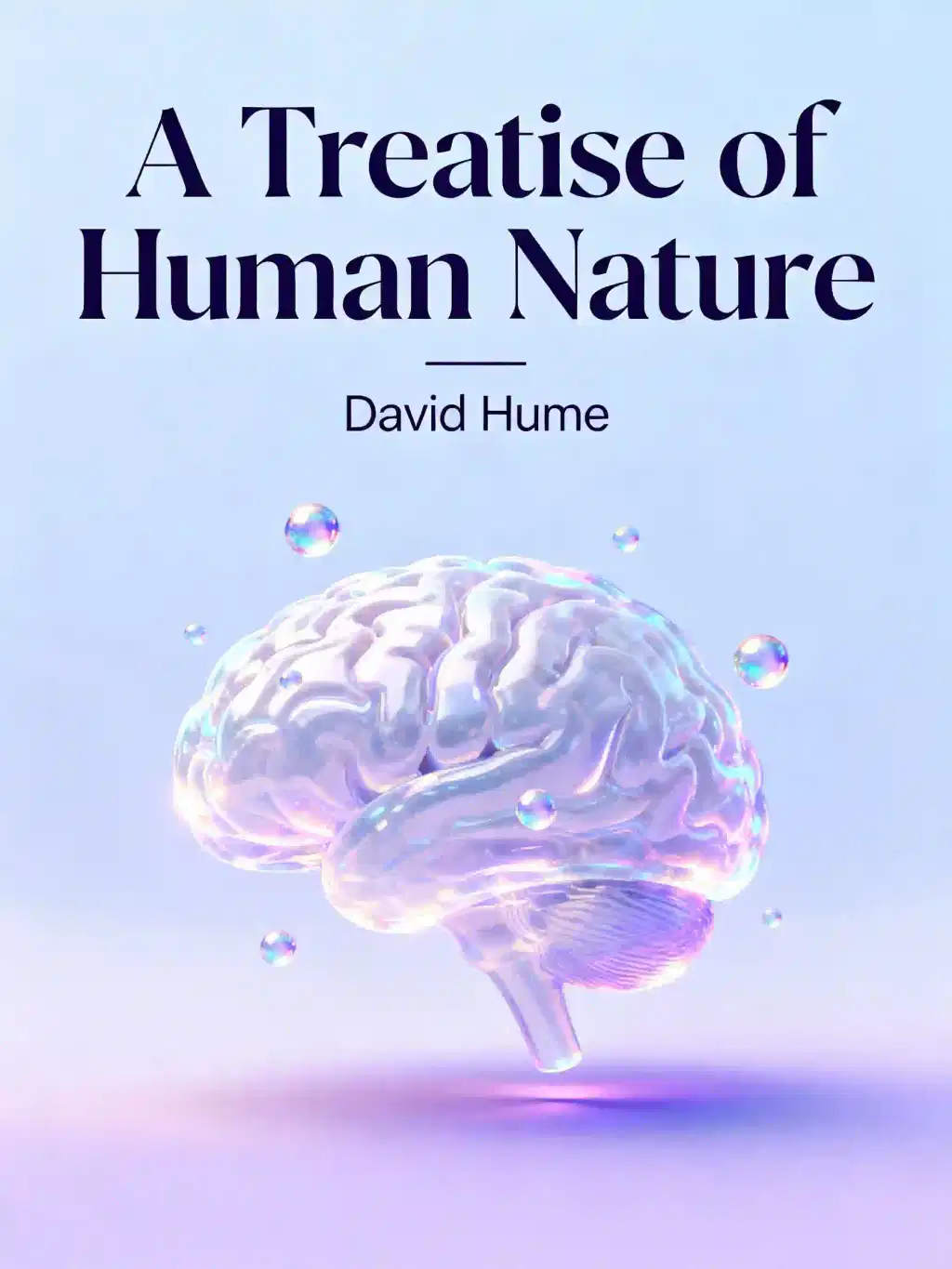What is
A Treatise of Human Nature by David Hume about?
David Hume’s A Treatise of Human Nature explores the foundations of human knowledge, emotion, and morality through empiricism. It argues that all ideas derive from sensory experiences ("impressions"), critiques causality as habit rather than logic, and examines passions as drivers of moral decisions. The book is divided into three parts: understanding, passions, and morals, establishing Hume’s systematic "science of man."
Who should read
A Treatise of Human Nature?
This book is ideal for philosophy students, scholars of empiricism, or readers interested in Enlightenment-era critiques of reason and morality. Its dense arguments suit those familiar with Locke, Berkeley, or Kant, though Hume’s accessible examples (e.g., animal psychology, beauty standards) offer broader appeal.
Is
A Treatise of Human Nature worth reading?
Yes, for its groundbreaking influence on philosophy, though its complexity may challenge casual readers. Hume’s empiricist framework reshaped debates on causality, free will, and ethics, inspiring thinkers like Kant. Modern readers gain insights into human psychology’s role in decision-making, but expect rigorous argumentation.
What are the main ideas in
A Treatise of Human Nature?
- Impressions vs. Ideas: Sensory experiences ("impressions") generate less vivid mental copies ("ideas").
- Causality as Habit: Cause-effect reasoning stems from repeated observation, not logical necessity.
- Passions Govern Reason: Moral decisions arise from emotions, not pure rationality.
- Is-Ought Problem: Ethical claims cannot logically derive from factual statements alone.
How does Hume explain cause and effect?
Hume argues causality is a mental habit formed by observing event sequences, not an inherent logical connection. For example, seeing daylight follow sunrise creates an expectation, but no empirical proof binds them necessarily. This undermines traditional metaphysical claims.
What is Hume’s "copy principle"?
The copy principle states all ideas originate from corresponding sensory impressions. Complex ideas (e.g., a unicorn) combine simpler ones (a horse + a horn), but even abstract concepts like "time" trace back to direct experiences.
What is Hume’s view on morality in
A Treatise of Human Nature?
Hume claims moral judgments arise from emotional responses ("moral sentiments"), not reason. Virtues like kindness please observers, while vices cause pain. This aligns morality with human psychology, rejecting abstract rationalist systems.
How does Hume critique religion in the
Treatise?
Hume indirectly challenges religious metaphysics by dismissing ideas without empirical bases (e.g., souls, divine causality). His skepticism questions miracles and intelligent design, though explicit theological critiques appear in later works.
What are key quotes from
A Treatise of Human Nature?
- "Reason is, and ought only to be, the slave of the passions": Emotions drive actions; reason guides practical steps.
- "Beauty in things exists in the mind which contemplates them": Aesthetic judgments reflect perceptual pleasure, not inherent qualities.
How does
A Treatise of Human Nature compare to Hume’s later works?
The Treatise lays Hume’s empiricist foundation, while An Enquiry Concerning Human Understanding streamlines its arguments for clarity. Later works like Dialogues Concerning Natural Religion expand on theological critiques only hinted at here.
What are criticisms of
A Treatise of Human Nature?
Critics argue Hume’s radical skepticism undermines scientific certainty and moral objectivity. Thomas Reid rejected the copy principle, while Kant sought to reconcile empiricism with innate mental structures. Some find Hume’s passive view of reason impractical.
Why is
A Treatise of Human Nature relevant today?
Its insights into cognitive biases, emotional decision-making, and social psychology prefigure modern behavioral science. The "is-ought" problem remains central to ethics debates, and its empiricist framework influences AI and consciousness studies.





















